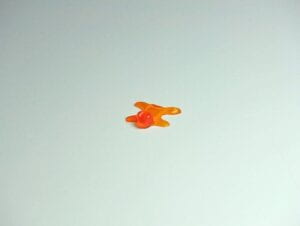Upon analyzing the three research readings, I believe that I now have a more concrete description of what the word interaction truly means. Without exploring the unique experiences of artists and their inventions, the word interaction is broad and can be defined in various ways. In fact, the Merriam-Webster Dictionary states the word interaction as a ‘mutual or reciprocal action or influence’. However, this definition does not fully convey the sophisticated meaning of interaction. My definition of interaction is the sequential process of an actor, man or machine, delivering a primary signal. Then, the other actor after carefully listening — and thinking, responds to the original subject in some shape/form. In this scenario, both actors must perform their roles. If one of them fails to act out their duties, interaction does not occur.
In Crawford’s article, The Art of Interactive Design, this idea is further exemplified. He states, “There are two actors, not
one. If I’m out in the woods and I hear to the sound of a tree branch breaking, and I meditate on the implications of such a sound emanating from my zenith, jumping out of the way just as the branch crashes to earth, I am not interacting with the branch; I am reacting” (5). Therefore, it’s mandatory that both actor successfully enact their role. If not, the word interaction is merely reduced to a ‘reaction’. Additionally, Igoe’s Making Interactive Art: Set the Stage, Then Shut Up and Listen reminds us that, “You can suggest actions, but you can’t tell him how to feel about those actions; he will have to find it for himself. He’ll discover the statement you’re looking to make through that conversation you have in rehearsal, and the resulting expression will be your collaborative effort.” All in all, interaction is a ongoing process that isn’t always completed through one attempt. Only through both actors’ constant communication and listening, can a collaborative action happen.
An example of successful Interaction : MotionPhone
MotionPhone is an software that allows users to create/design a continuous pattern of different shapes using solely hand movements. Ranging from one finger to all, this program allows materials to constantly be added. The shapes’ sizes, color, movement, speed, can all be altered with a click of a button. Furthermore, it links with Game Center to allow other interested creators to join the space. In this space, everything is linked and users can see/add their own designs come to life. To me, this is an successful example of interaction. The software first listens to the users’ (human fingers) with intensity, proceeds to think about the proper algorithm and presentation, and finally responds in various colorful shapes/forms. All three factors are present, while fully accommodating the users’ wishes, which is the foundation of what interaction is.
An failed example of Interaction:Miniatures



Here, the opposite case is demonstrated. Miniatures, an art project created by Brock Davis, attempts to recreate daily objects/items using witty and creative measures. For example, the iconic StoneHenge can be seen instead as a pile of Rice-Krispy treats (yum!). There are other flashy examples, like the Broccoli Tree House & Gummy Bear Rug. While the artistic aspect of Davis is undoubtedly displayed, there isn’t an interaction taking place. Viewers only have the opportunity to see the piece, not physically touch or interact with it. The factors of listening, thinking, & speaking incorporated are very little if not non-existent. Overall, this is wonderful for an exhibition. However, it lacks what it takes to become an art piece with proper interaction.
Leave a Reply